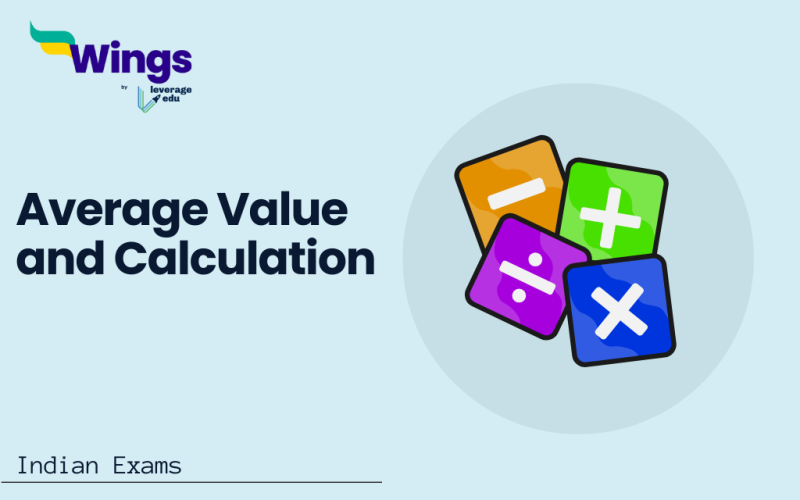Average value and calculation questions very commonly appear in the banking, management, law exams, and government exams like UPSC, CDS, NDA, or AFCAT. To attempt them without much difficulty, it is necessary to get an overview of the average value and calculation. Additionally, we will also learn the correct formula to calculate these types of questions. Then we will proceed toward some questions related to this. Keep reading this blog till the end to not miss out on any of these things.
Contents
What is the Average Value?
The average value is a way to find the typical or central value in a set of numbers. To calculate the average, you add up all the numbers in the set and then divide that sum by the total count of numbers. The average value represents a typical value within a group of numbers by distributing the total evenly among all the values.
Also Read: Average Cost Questions: Formulas and Solved Examples
How to Calculate the Average Value?
Following are the steps to calculate the average value.
- Calculate the sum of all data values
- Identify the number of data values
- Lastly, look for the average value by dividing the sum of values by the number of data values.
The obtained result is the average value of the given data set.
Questions of Average Values
Example 1: A batsman scored runs in seven consecutive matches are given below:
69, 21, 78, 77, 94, 54, 48
Find the average runs scored by the batsman.
Solution: Given,
69, 21, 78, 77, 94, 54, 48
Step 1: Sum of runs = 69 + 21 + 78 + 77 + 94 + 54 + 48 = 441
Step 2: Number matches = 7
Step 3: Average = 441/7 = 63
Therefore, the average runs scored by the batsman = 63.
Example 2: There are 7 boys and the mean weight of all of them together is 56 kgs. If we know the weight of six of them as 52, 57, 55, 60, 59, and 55. What will be the weight of the seventh boy?
Solution: We know the mean weight of 7 boys is 56 kgs (that is 56 kgs x 7 = 392) and we also know the individual weight of six of the boys that we will add up together.
So, 52 + 57 + 55 + 60 + 59 + 55 = 338 kgs.
Therefore, the weight of the seventh boy = the total weight of the 7 boys – the total weight of 6 boys.
Put the required values, the total weight of the 7 boys as 392 kgs, and the total weight of 6 boys as 338 kgs, and the result will come to 54 kgs.
Hence the total weight of the 7th boy is 54 kgs.
Example 3: If a cricketer has a mean score of 58 runs in 9 innings. So, how many runs can the cricketer score in the 10th innings to get the mean score of 61?
Solution: The mean score of 9 innings was 58 runs.
Therefore the total score of the 9 innings will be 58 x 9 = 522 runs.
The mean score required in 10 innings is 61 runs.
The total score required in 10 innings is 61 x 10 = 610 runs.
Therefore the total number of runs to be scored in 10 innings will be:
The scores of 10 innings – the scores of 9 innings = 610 – 522 = 88 runs.
Example 4: There are 5 numbers whose mean is 28. If one number gets excluded and the mean reduces by 2 then what is the excluded number?
Solution: the mean of 5 numbers is 28.
Sum of the five numbers is 28 x 5 = 140
So if the mean is reduced by 2 the means of the rest 4 will be 28 – 2 = 26
The sum of these 4 numbers will be 26 x 4 = 104
Therefore, the excluded number will be the sum of 5 numbers – the sum of 4 numbers
Here put the sum of 5 numbers as 140 and the sum of 4 numbers as 104 and the result will come as 36.
Average Value Formula: Sum of All Data Values/Total Number of Data Values
Also Read: Difference Between Average and Mean
FAQ
The average value is calculated by using this formula: Sum of All Data Values/Total Number of Data Values.
It helps us quickly remember the available data.
The term Average is used to denote a value that is meant to represent the sample.
Engaging with these questions is instrumental in honing your analytical thinking, pattern recognition, and problem-solving skills. For more study material on Indian Exams, check out Leverage Edu!
 One app for all your study abroad needs
One app for all your study abroad needs














